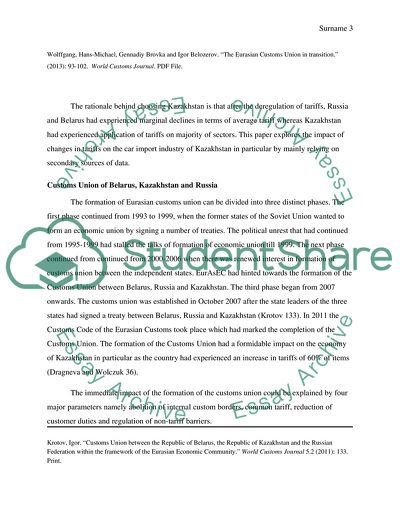Cite this document
(How does the Customs Union of Belarus, Kazakhstan, and Russia affect Essay, n.d.)
How does the Customs Union of Belarus, Kazakhstan, and Russia affect Essay. https://studentshare.org/macro-microeconomics/1838008-how-does-the-customs-union-of-belarus-kazakhstan-and-russia-affect-the-import-of-cars-into-kazakhstan
How does the Customs Union of Belarus, Kazakhstan, and Russia affect Essay. https://studentshare.org/macro-microeconomics/1838008-how-does-the-customs-union-of-belarus-kazakhstan-and-russia-affect-the-import-of-cars-into-kazakhstan
(How Does the Customs Union of Belarus, Kazakhstan, and Russia Affect Essay)
How Does the Customs Union of Belarus, Kazakhstan, and Russia Affect Essay. https://studentshare.org/macro-microeconomics/1838008-how-does-the-customs-union-of-belarus-kazakhstan-and-russia-affect-the-import-of-cars-into-kazakhstan.
How Does the Customs Union of Belarus, Kazakhstan, and Russia Affect Essay. https://studentshare.org/macro-microeconomics/1838008-how-does-the-customs-union-of-belarus-kazakhstan-and-russia-affect-the-import-of-cars-into-kazakhstan.
“How Does the Customs Union of Belarus, Kazakhstan, and Russia Affect Essay”. https://studentshare.org/macro-microeconomics/1838008-how-does-the-customs-union-of-belarus-kazakhstan-and-russia-affect-the-import-of-cars-into-kazakhstan.


